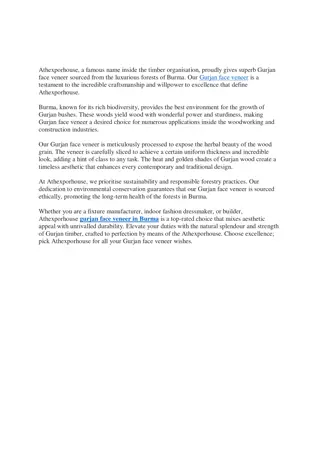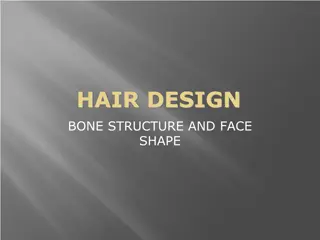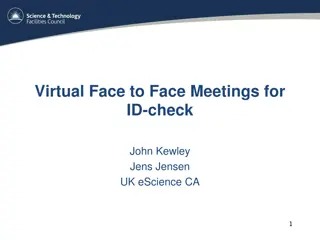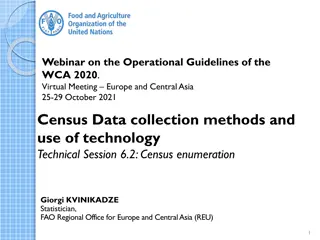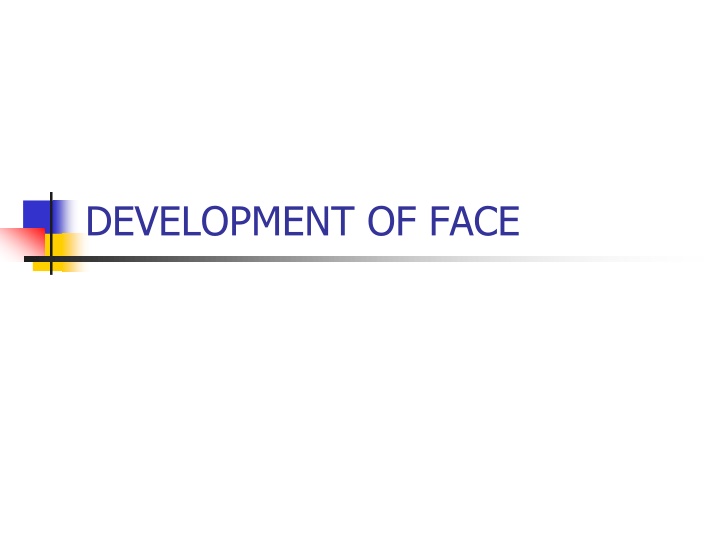
Development of Face
Explore the intricate process of facial development in embryos, including the formation of frontonasal, maxillary, and mandibular prominences, primary palate, nose, lips, eyes, and external ear. Learn about anomalies and abnormalities in facial development.
Uploaded on | 2 Views
Download Presentation

Please find below an Image/Link to download the presentation.
The content on the website is provided AS IS for your information and personal use only. It may not be sold, licensed, or shared on other websites without obtaining consent from the author. If you encounter any issues during the download, it is possible that the publisher has removed the file from their server.
You are allowed to download the files provided on this website for personal or commercial use, subject to the condition that they are used lawfully. All files are the property of their respective owners.
The content on the website is provided AS IS for your information and personal use only. It may not be sold, licensed, or shared on other websites without obtaining consent from the author.
E N D
Presentation Transcript
Purpose Statement At the end of the lecture, the students should be able to describe -describe development of frontonasal, maxillary and mandibular prominences., Explain development of primary palate and nose .,Describe development of lips upper and lower , Describe development of eyes and external ear.,Explain anomalies of face., Describe development of palate its anomalies
Learning Objectives At the end of the lecture the student should be able to Criteria Condition S.N. Learning Objectives Domain Level Describe development of frontonasal, maxillary and mandibular prominences. Explain development of primary palate and nose . 1 Cognitive Must Know All 2 Cognitive Must Know Must Know Must Know All Describe development of eyes and external ear. 4 Cognitive All Describe development of palate its anomalies 5 Cognitive All
CONTENTS Development of frontonasal, maxillary and mandibular processes Development of nose and primary palate: Development of cheeks:
Development of frontonasal, maxillary and mandibular processes Face develops mainly from the following processes- Frontonasal process . Maxillary processes of right and left side . Mandibular processes of right and left side. 1. 2. 3.
Frontonasal prominence: After the formation of head fold, the developing brain and pericardium form two bulgings on the ventral aspect of embryo. These bulgings are separated by stomatodeum.
The mesoderm covering the forebrain proliferates to form frontonasal process.
Maxillary process: First arch gives a process from its dorsal end called as maxillary process. Mandibular process: The remaining main part of the first arch i.e.mandibular arch is called as mandibular process.
Development of nose and primary palate: The ectoderm overlying the frontonasal process shows two localized thickenings just above the stomatodeum.
These thickenings are called nasal placodes. These placodes sink below the surface to form nasal pits ,however ,the edges of placodes are raised above the surface.
Nasal pits are continuous with the developing oral cavity below. The raised lateral edge is called as the lateral nasal prominence and medial edge is called as the medial nasal prominence.
Both the medial and the lateral nasal prominences grow towards each other.
During this development, the maxillary process proliferates and merges first with the lateral nasal prominence and then with the medial nasal prominence. Medial and lateral nasal prominence also merge with each other .
The contact of lateral and medial nasal processes and the maxillary process forms the initial separation of the developing oral cavity and the nasal pits . This initial separation is called as the primary palate.
The nasal pits or the external nares gradually approach each other due to narrowing of the frontonasal process. The deeper part of the frontonasal process forms the nasal septum.
Mesoderm heaps up in the median plane to form the prominence of the nose and the external nares now come to lie downwards.
Development of cheeks: After the formation lips, the stomatodeum appears to be very broad. In the lateral part of the stomatodeum, the maxillary and the mandibular processes progressively fuse with each other to form cheeks.
Development of eyes: Development of eyes begins with the formation of ectodermal thickenings called as lens placodes. Lens placodes sink below the surface and are cut off from the surface ectoderm.
Developing eyeball produces bulging which is initially directed laterally but later faces forwards due to narrowing of frontonasal process.
Development of external ears External ear is formed around the dorsal part of first ectodemal cleft . Mesodermal thickenings called hillocks appear on mandibular and hyoid arches which fuse together to form external ear or pinna.
Anomalies of face : Oblique facial cleft: caused due to non-fusion of maxillary and lateral nasal processes. Retrognathia:smaller mandible Macrostomia: wide mouth Microstomia:small mouth
Treacher-Collins syndrome: Also called as Mandibulo-facial dystosis . In this syndrome, the entire first arch of one or both sides may remain undeveloped. Lateral facial cleft: caused due to non-fusion of mandibular and maxillary process of one side.
Summary: Face mainly develops from frontonasal maxillary and mandiular processes. Nose develops from nasal placodes. Primary palate is formed by the fusion of lateral and medial nasal processes and maxillary process.
Summary: Cheeks are formed by the fusion of maxillay and mandibular processes. Palate is formed by the fusion of palatal and maxillary processes.
BIBLIOGRAPHY Color Atlas And Text Book Of Oral Anatomy, Histology Berkovitz, B. 1ST edition. Oral Development and Histology Avery, j. K.1stedition. Oral Histology : Development, Structure and Function Tencate, 4thedition. Dental Embryology, Histology & Anatomy. Marry Bath- Balogh Inergaret. 2ndedition.


